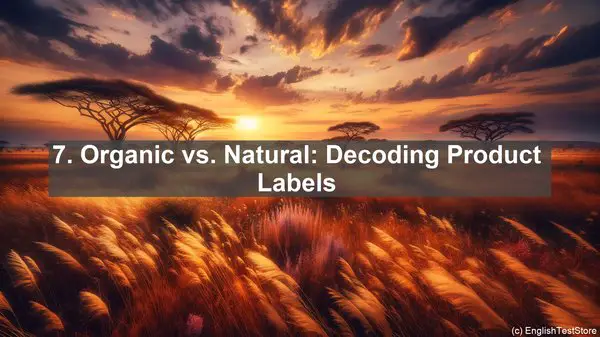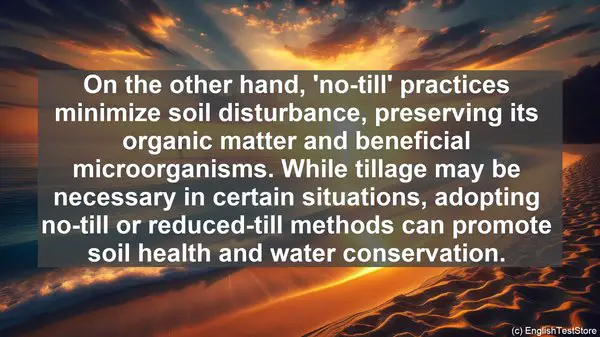Introduction: The Importance of Language in Organic Farming
Welcome to our organic farming series. Today, we’re diving into the world of words. You might think farming is all about the soil, plants, and animals, but the right words can make a significant difference. They can guide you towards the best practices, help you communicate effectively, and avoid costly mistakes. So, let’s get started with the top 10 commonly confused words in organic farming practices.

1. Compost vs. Fertilizer: Understanding the Difference
Compost and fertilizer are both used to enrich the soil, but they have distinct characteristics. Compost is organic matter that has decomposed over time, providing a slow-release of nutrients. On the other hand, fertilizers are concentrated nutrients that offer a quick boost. While compost improves soil structure and long-term fertility, fertilizers are ideal for addressing immediate nutrient deficiencies. So, it’s crucial to strike a balance between the two.
2. Hybrid vs. Heirloom: Choosing the Right Seeds
When it comes to seeds, you’ll often come across the terms ‘hybrid’ and ‘heirloom.’ Hybrid seeds are a result of cross-pollination between different varieties, offering specific traits like disease resistance. Heirloom seeds, on the other hand, are open-pollinated and have been passed down for generations. While hybrids can provide higher yields and uniformity, heirlooms preserve genetic diversity. The choice depends on your goals and the specific crop.
3. Pesticide vs. Insecticide: Navigating Pest Management
Pest management is a critical aspect of organic farming. While ‘pesticide’ is a broad term encompassing all substances used to control pests, ‘insecticide’ specifically targets insects. In organic farming, the emphasis is on using natural and biological controls, like beneficial insects or crop rotation, to minimize pest damage. However, if necessary, approved organic pesticides can be used, keeping in mind their potential impact on non-target organisms.
4. Tillage vs. No-Till: Considering Soil Health
The way we prepare the soil can have long-lasting effects. Tillage involves mechanical manipulation of the soil, which can disrupt its structure and lead to erosion. On the other hand, ‘no-till’ practices minimize soil disturbance, preserving its organic matter and beneficial microorganisms. While tillage may be necessary in certain situations, adopting no-till or reduced-till methods can promote soil health and water conservation.
5. Cover Crop vs. Cash Crop: Maximizing Field Potential
In a field, you’ll often find a combination of cover crops and cash crops. Cover crops, like legumes or grasses, are primarily grown to benefit the soil. They prevent erosion, add organic matter, and fix nitrogen. Cash crops, on the other hand, are the main crops grown for economic purposes. By strategically incorporating cover crops, you can enhance soil fertility, reduce weed pressure, and improve overall field productivity.
6. Biodegradable vs. Compostable: Understanding Environmental Impact
In today’s world, sustainability is a key consideration. When it comes to packaging or other materials, terms like ‘biodegradable’ and ‘compostable’ are often used. While both imply a level of environmental friendliness, there are differences. Biodegradable materials break down naturally over time, but the process may release harmful substances. Compostable materials, on the other hand, not only break down but also contribute valuable nutrients to the soil when composted correctly.

7. Organic vs. Natural: Decoding Product Labels
Product labels can sometimes be confusing, especially when it comes to terms like ‘organic’ and ‘natural.’ Organic products are regulated and certified, adhering to specific standards that prohibit the use of synthetic chemicals. ‘Natural’ is a broader term and doesn’t necessarily guarantee the absence of synthetic substances. When choosing inputs for your farm, look for credible certifications and labels to ensure you’re making informed decisions.
8. Perennial vs. Annual: Planning for Crop Lifecycles
Crop lifecycles can vary significantly. Perennial crops, like fruit trees or asparagus, can last for several years, while annual crops, like corn or lettuce, complete their lifecycle in a single year. Understanding these differences is crucial for crop rotation, long-term planning, and resource allocation. Perennials may require more initial investment and maintenance but can provide consistent yields over time.
9. Biodiversity vs. Monoculture: Balancing Ecosystems
In nature, diversity is key. Biodiversity refers to the variety of plants, animals, and microorganisms in an ecosystem. Monoculture, on the other hand, involves growing a single crop over a large area. While monoculture can offer certain efficiencies, it also increases the risk of pest outbreaks and soil degradation. By promoting biodiversity through practices like intercropping or creating wildlife habitats, you can enhance ecosystem resilience and reduce reliance on external inputs.
10. Regenerative vs. Sustainable: Aiming for Long-Term Impact
As organic farmers, our goal extends beyond the present. ‘Sustainable’ farming aims to maintain the current system, minimizing negative impacts. ‘Regenerative’ farming, on the other hand, goes a step further, actively working towards restoring and improving the ecosystem. It’s about leaving the land in a better state for future generations. While both approaches have their merits, regenerative practices can have transformative effects, rebuilding soil health and sequestering carbon.
